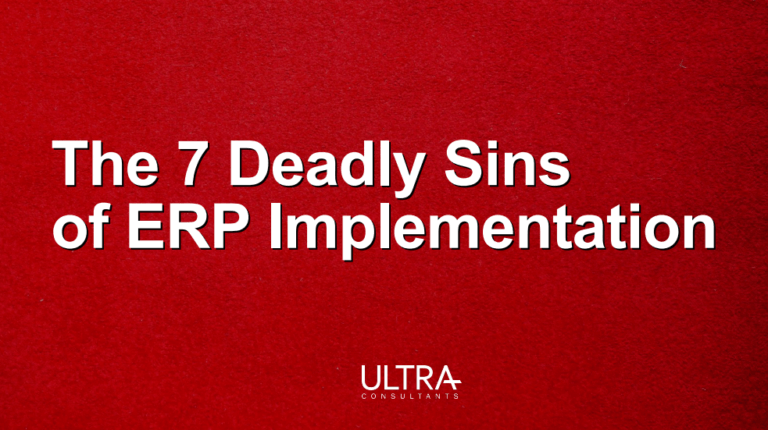Are You Thinking Beyond the ERP Checklist?
When considering an ERP project, Ultra’s team of independent ERP consultants makes the case to think beyond an ERP checklist and beyond the idea of a technology replacement. Instead, we guide teams to focus squarely on business process improvement.
While an outdated and legacy ERP system can hamper growth and necessitate manual record keeping and redundant data entry, today’s top manufacturing and distribution companies succeed by improving business processes.
Thinking beyond an ERP checklist and instead, think business process improvement.
Business Process Improvement puts the focus on understanding your processes and business requirements, and identifying areas of improvement based on best practices with a track record of reducing process waste.
A proven methodology first considers project organization. With a team of business process owners, the first step is to determine the project scope, ERP requirements, objectives, and measurements for the engagement.
This leads to a business process review to define strategy, determine the maturity of your sales and operations planning, and complete management scorecards, which identify current key business metrics and determine future requirements.
ERP Checklist and the Current State
Any thoughts of an ERP checklist must also take into consideration a current state analysis.
Analyzing your current state requires gathering key performance metrics and determining their value. Examples include productivity, quality, overtime, inventory, and others.
As the team reviews the current state, business process mapping maps are created, for example, for Quote to Order, Order to Cash, and Procure to Pay processes.
A Vision of the Future
Before we can begin to define the future state, we need the ERP project team to understand “what is possible” with a new enterprise software solution and which ERP requirements are associated with each process.
Looking at each business process flow, we help identify gaps between the current state and industry best practices to effectively design your future state business processes.
So for an optimal future state, the goal is to eliminate waste and improve productivity.
Finally, each of these steps on your ERP checklist leads to the development of the business case for change, which is your main project driver and the foundational justification for your project.
Your ERP Checklist: Setting ERP Requirements for Today and Tomorrow
Watch an archived webinar which summarizes key points related to an effective ERP checklist.
ERP Checklist Final Thoughts
Ultimately, an ERP solution is part of an overall strategy of business process transformation. The focus needs to be on what is happening on the manufacturing floor, in shipping/receiving and deliver, and finally in sales that pays the bills and turns the profits. That makes the technology factor a strategic rather than a strictly IT decision.
The most successful ERP results occur when the goal is business process improvement, and when technology specifications are determined by what is required to support critical business needs.
Contact Ultra Consultants to help your team think beyond an ERP checklist.
The 7 Deadly Sins of ERP Implementation
Some mistakes are just bad strategic or financial decisions. Some are the inevitable consequence of situational or organizational factors. Some, however, are the result of process-oriented or people-centric choices – and are easily avoided. These are The Seven Deadly Sins of ERP Implementation.







